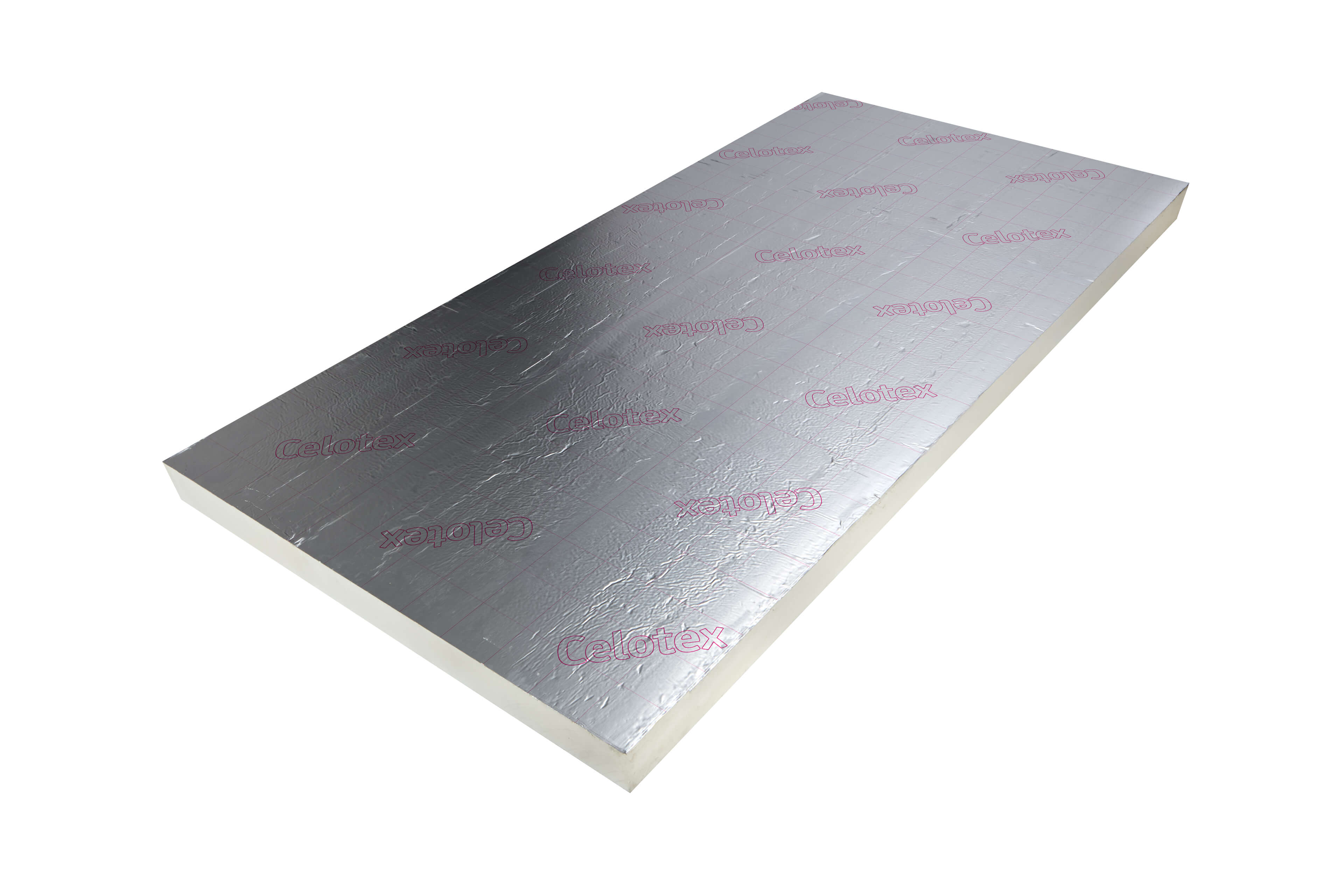Celotex XR4000 Insulation Boards
(7 Products)Celotex Insulation XR4000 is the designation Celotex uses for its multi-purpose "Extra Resistance" insulation boards, available in sizes thicker than 100mm. These boards, measuring 2.4m x 1.2m, share the same high-performance construction as other Celotex insulation products, with the key difference being their increased thickness for enhanced thermal resistance. Like their thinner counterparts, the XR4000 boards feature a PIR (polyisocyanurate) foam core sandwiched between two low emissivity foil facings. With an impressive thermal conductivity of just 0.022 W/mK, they offer exceptional energy efficiency, suiting them to a wide range of applications, including roof, wall, and floor systems.
What Is Celotex XR4000?
Celotex XR4000 stands as the thickest and most thermally efficient insulation product within the Celotex range. The "XR" designation signifies eXtra Resistance to heat transfer, emphasising the product’s ability to provide significantly higher thermal resistance compared to standard, thinner insulation materials.
In many cases, only a single layer of the XR4000 is needed to meet stringent thermal performance targets. This reduces the complexity of layered installations, saving both time and labour costs. It also proves especially advantageous in situations where space is limited - such as between rafters in pitched roofs or within narrow loft or wall cavities - helping builders maximise insulation performance without encroaching too much on valuable interior space.
What Does XR Stand For?
The "XR" in Celotex XR4000 stands for "Extra Resistance." This designation emphasises the board's enhanced thickness and superior thermal performance, tailored for projects where maximising insulation in limited space is crucial.
How XR Compares to Other Celotex Ranges
- XR (Extra Resistance) - Offering thicker insulation boards, XR products provide maximum thermal resistance, making them ideal for projects requiring high levels of insulation in space-constrained environments or for achieving superior thermal efficiency in demanding applications.
- TB (Thermal Bridging) - Specifically engineered to combat thermal bridging, Celotex TB4000 is ideal for eliminating cold spots in areas where heat loss through gaps or discontinuities in insulation is a concern.
- GA (General Application) - A versatile insulation range for walls, floors, and roofs, GA4000 offers a balanced combination of performance and ease of installation.
Applications
- Ground Floors:
- Concrete Slab (Perimeter Upstand)
- Beam and Block (Perimeter Upstand)
- Suspended Timber Joists (Perimeter Upstand)
- Upgrading Existing Concrete Slab (Perimeter Upstand)
- External Walls:
- Timber Frame Internal Linings
- Masonry Cavity Internal Linings
- Solid Masonry Internal Linings
- Pitched Roofs:
- Below Timber Rafters
- Above Timber Rafters
Celotex XR4000 should not be used in external walls of buildings over 11 metres. Due to recent Building Regulation changes, only non-combustible or limited combustibility insulation is permitted for these applications to enhance fire safety.
Benefits
- Extra-thick, high-performance PIR insulation board designed for superior thermal efficiency in roofs, walls, and floors.
- "XR" stands for "Extra Resistance," referring to its ability to provide greater thermal insulation with fewer layers compared to thinner insulation boards.
- Faced with low-emissivity aluminium foil, enhancing thermal performance in cavity and solid wall applications.
- Lightweight yet rigid, ensuring easy handling and installation in both new builds and refurbishments.
- Moisture-resistant closed-cell structure prevents water absorption, ensuring long-term durability and consistent performance.
- Manufactured to meet UK Building Regulations, providing a reliable solution for energy-efficient construction.
XR4000 Thicknesses
Frequently Asked Celotex XR4000 Questions
Can Celotex XR4000 Be Used in All Types of Buildings?
While Celotex XR4000 is versatile and suitable for a wide range of applications, it's important to note that it should not be used in the external walls of buildings over 11 meters in height.
This is due to fire safety regulations that require non-combustible or limited combustibility materials in such applications.
How Does Celotex XR4000 Work?
Celotex XR4000 is designed to deliver outstanding thermal resistance through its innovative construction and material properties. The product features a high-performance rigid foam core that traps air in tiny, stable pockets. These air pockets act as an insulating barrier, drastically reducing the flow of heat between the inside and outside of a building. This process - called thermal resistance - minimises heat loss in the winter and heat gain in the summer, helping to maintain a consistent and comfortable indoor temperature year-round.
Is Celotex XR4000 Easy to Install?
Yes, the boards are lightweight and rigid, which facilitates easy handling, transportation, and installation. Their design assists in quick fitting and securing in place, making them a convenient option for contractors.






